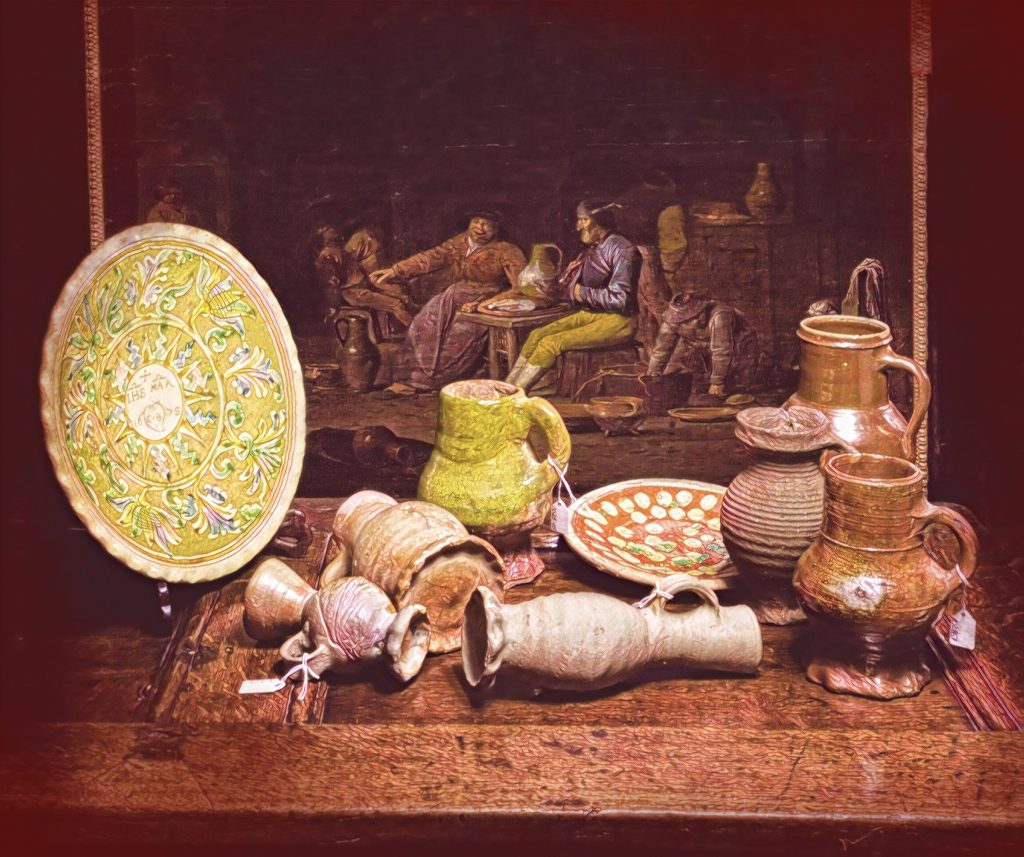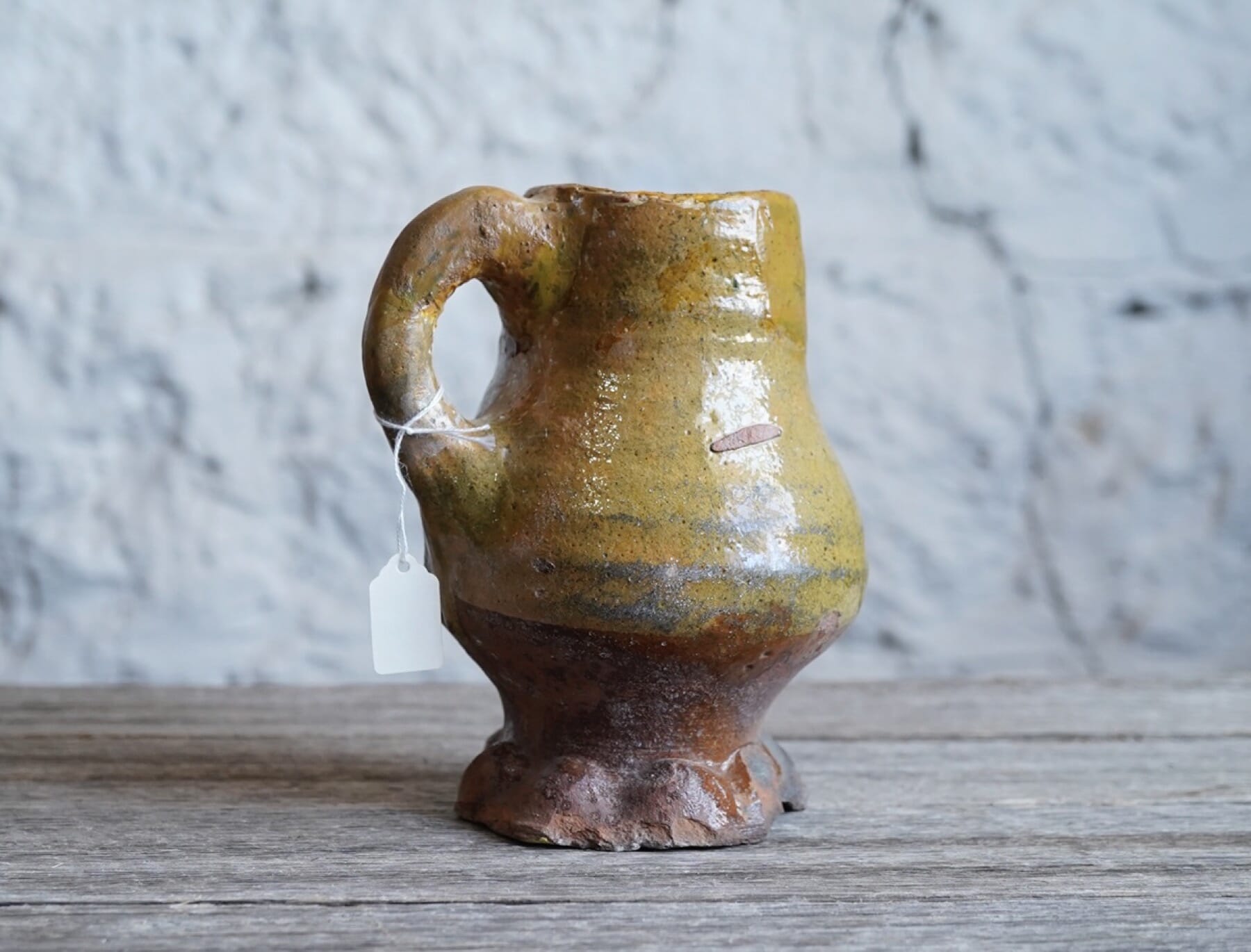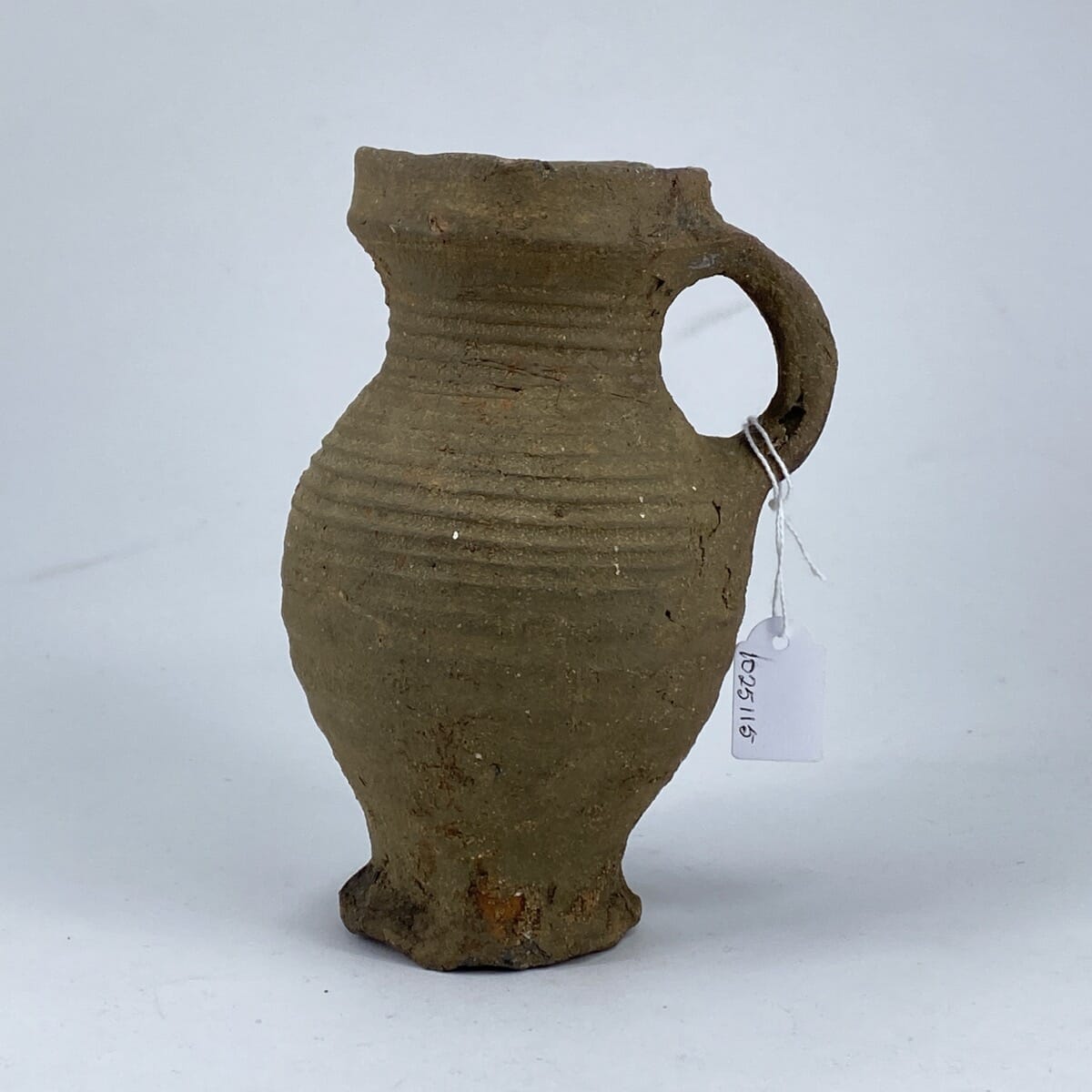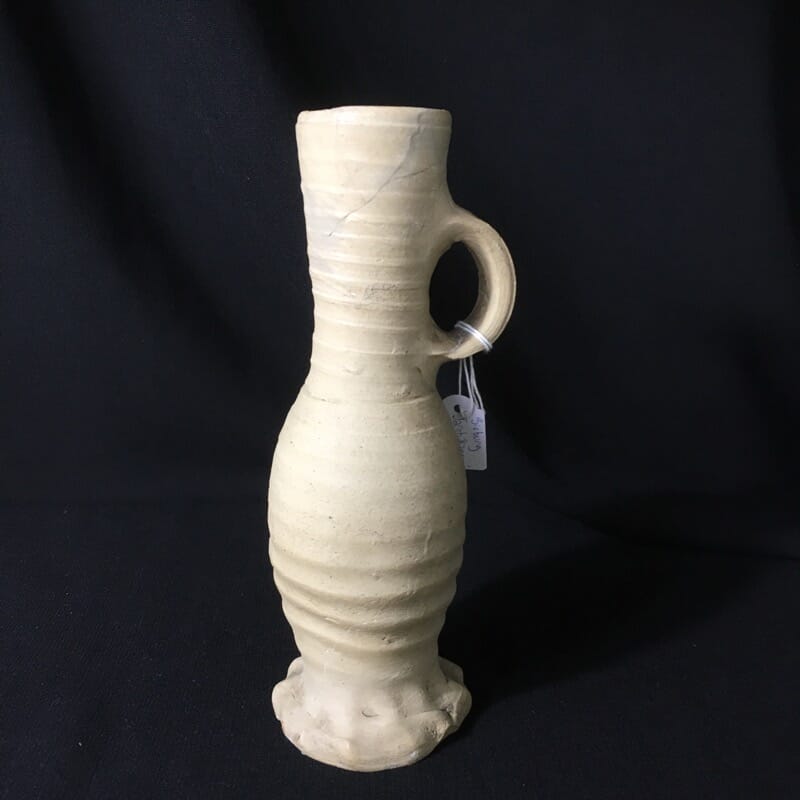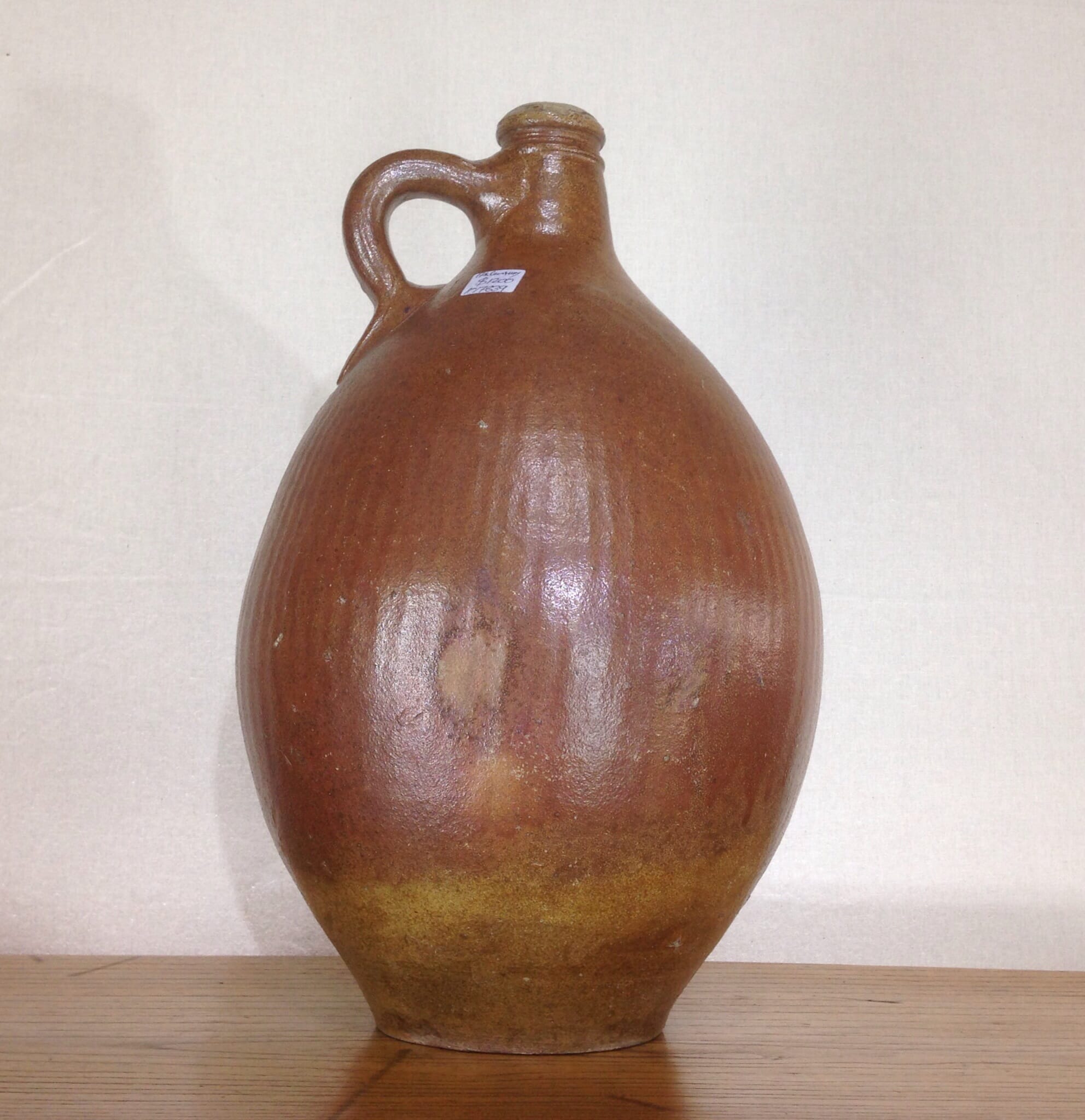Having a drink at a public house seems an impossible luxury for any Melbourne people in the present covid-crazy world – we’re hoping it will be a reality by Christmas…
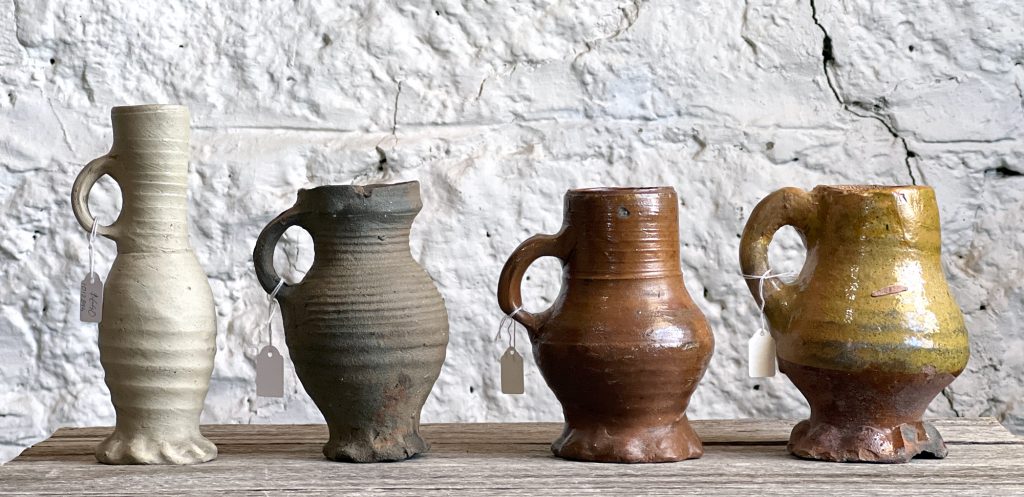
Meanwhile, we have a great little illustration of how you would have swilled your brew 600 years ago…. and for the first time on moorabool.com, you will be able to ‘virtually’ turn the illustrations around in your hand!
Did you find the secret to viewing the above image?
These are ‘spins’, a method of presenting 360º views of items via your browser. You’ll find that you can also expand the image to cover your entire screen – or zoom in to view details close-up on any of the views. It’s great fun on a touch device such as a phone or tablet – use your finger to spin the item, then double-tap to zoom! On a computer, it’s similar but you’ll use a mouse to indicate which direction you wish to ‘spin’.
Each spin takes some time to set up, but we’re gradually introducing more & more ‘spins’ for your viewing pleasure – small items are easiest, we have yet to try a bookcase !
Click the smaller image above to load that spin in the space above.
Our latest Stock Release includes these drinking vessels, 13th-16th centuries.
Having this collection of incredibly early drinking vessels is possible due to the nature of their construction: high-fired ‘stoneware’ is a clay that has been taken up to a very high temperature, over 1,000ºc. This literally turns it into a stone-like substance, and the result was a very durable object. If damaged ( the handle is the weakest part), it would survive being thrown into the rubbish heap – or in places like London and Amsterdam, into the nearest waterway. The canals of Amsterdam are a terrific source for these early pottery pieces, as is the Thames in London, constantly throwing up interesting pieces for the mudlarkers.
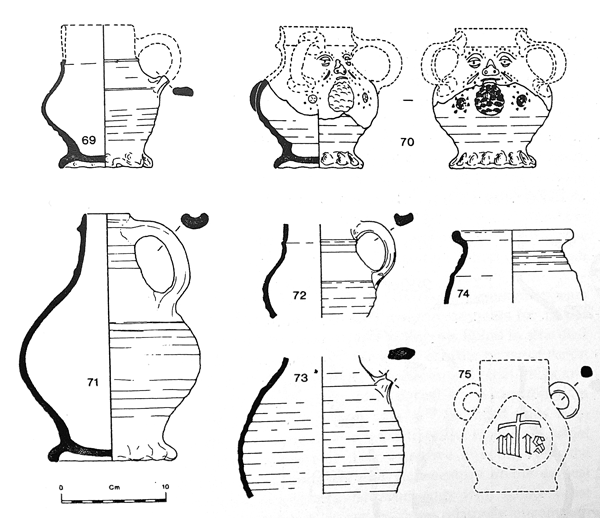
left: German Raeren stonewares and other imported ceramics recovered from the Pottergate fire deposit dated to 1507 (Cellar H), Norwich, excavated in the 1970’s.
The 1507 fires in Norwich destroyed a good half of the houses in the flourishing city, but the hardy stonewares were still well preserved in the rubble when excavated 470 years later.
These stoneware examples were imports from Raeren, Germany. Note the top left example – it is the original model for the rare English copy we currently have in stock. See the blog post on this Medieval English Rarity here >>
Dating these pieces is possible due to archaeological excavations, with dates of occupation layers being scientifically identified – but there is a much older and more fun way also. The Dutch artists of the 16th-18th century loved to show the lively state of the peasants, drinking and dancing in what appears to be an endless party. Inside taverns or out in the town square, the Dutch genre paintings show endless examples of people drinking from these mugs, and by dating the painting, we can date the vessels shown in almost photographical detail within them.
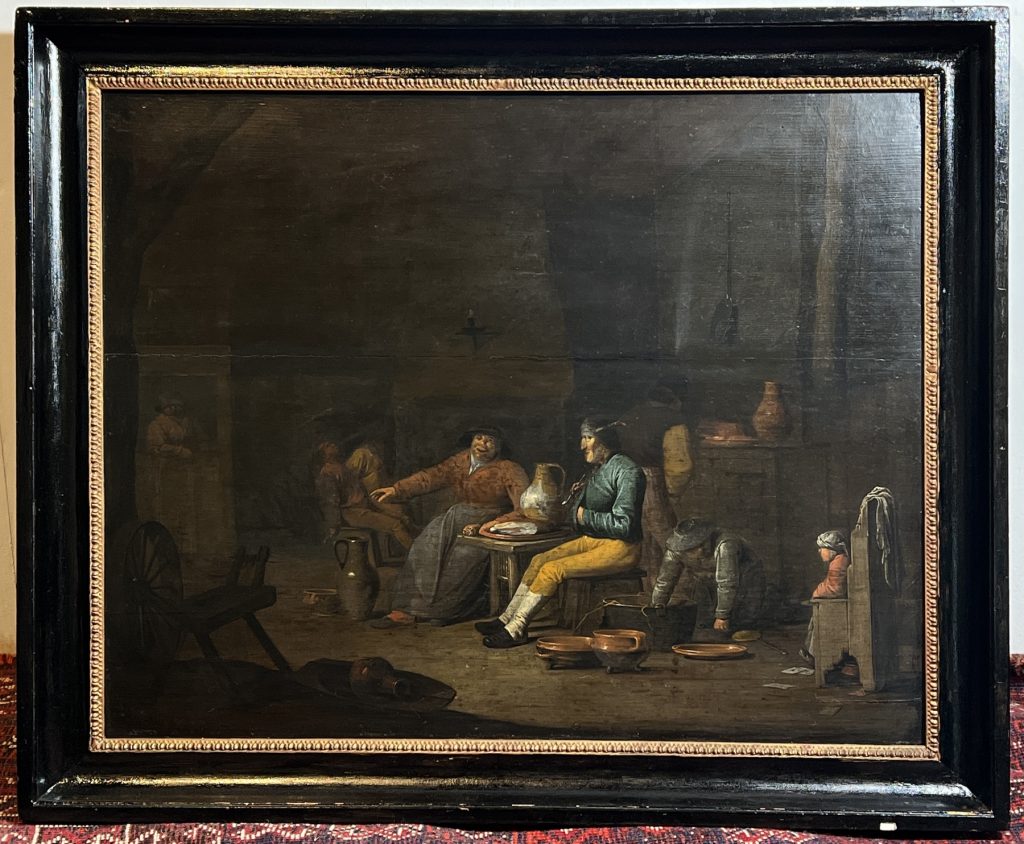

Pieter Brueghel the Younger (1562-1638) is one such artist, and we are excited to have a possible unsigned work by him. We purchased it because of the ceramics, which were peeping out from beneath a thick layer of old dark varnish: the image that emerged after careful conservation is remarkable, and of high quality – but unsigned. This is not unusual for Brueghel, with many of his accepted works not having a signature – or often just some small initials hidden somewhere in the scene, like a piece of paper on the wall! We’ve looked and looked, but nothing appears – so the next step is to put it before the Pieter Brueghel the Younger experts in Europe for a verdict. One point very much in its favour is that while it has a few similar elements, compared to the established Brueghel works, it is a completely fresh composition. While there are many 18th-20th century copies of his well-known works, there is no original for this one to be copied from, supporting the originality of this painting. Stay tuned for more on this one!
(There will be an in-depth analysis posted on this blog in the near future)
-
 Medieval leadglaze drinking mug, rare English lead-glazed type, thumbed base, attr. Donyatt, 14th centurySold
Medieval leadglaze drinking mug, rare English lead-glazed type, thumbed base, attr. Donyatt, 14th centurySold -
 Medieval saltglaze drinking mug, thumbed foot, Sieburg, 15th-16th century$495.00 AUD
Medieval saltglaze drinking mug, thumbed foot, Sieburg, 15th-16th century$495.00 AUD -
 German stoneware drinking mug, thumbed base, Raeren 15th-early 16th centurySold
German stoneware drinking mug, thumbed base, Raeren 15th-early 16th centurySold -
 German Medieval stoneware drinking mug, unglazed, Sieburg early 14th century$950.00 AUD
German Medieval stoneware drinking mug, unglazed, Sieburg early 14th century$950.00 AUD -
 German stoneware ‘Jacobakannen’ drinking jug, Sieburg , Circa 1400Sold
German stoneware ‘Jacobakannen’ drinking jug, Sieburg , Circa 1400Sold -
 Large German stoneware Bellarmine, 17th century$1,200.00 AUD
Large German stoneware Bellarmine, 17th century$1,200.00 AUD
